Opinion & Analysis
How to play long par-4’s and par-5’s effectively
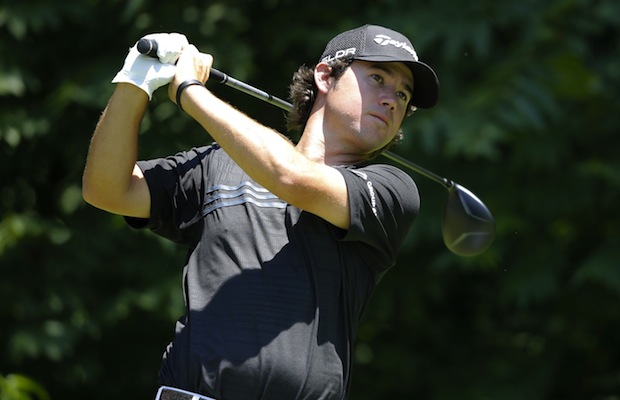
This past week, Brian Harman won the John Deere Classic. Harman has been one of my favorite players to follow from a statistical approach because he is one of the most aggressive tee shot players on Tour, meaning his numbers show that he is less likely to lay-up off the tee and continue to hit his driver. Here are the top-10 most aggressive drivers on Tour from the 2013 season:
- Ian Poulter
- Ben Curtis
- Brandt Snedeker
- Phil Mickelson
- Brian Harman
- Graeme McDowell
- Tim Clark
- Robert Castro
- Steve Sticker
- Matt Kuchar
The statistical research in the game has repeatedly shown that golfers are better off utilizing an offensive strategy versus a defensive strategy. It will not work every time, but golfers who utilizes an offensive strategy usually putting the odds in their favor. The question then becomes, “When is the point of being too aggressive?”
The general rule of thumb in golf statistics is that the closer the ball is to the hole, the more likely the golfer will hit the next shot closer to the hole. The type of lie a player has, however, plays a large factor in this as well.
The chart below shows the 2013 PGA Tour averages in proximity to the club. It illustrates how getting the ball closer to the hole is generally better, but it clearly helps to get the ball in the short grass as well:
Something that is often overlooked by golfers is that this is just measuring the Proximity to the Cup. While important, it does not assume that each shot lands on the green. In fact, the ShotLink data will measure any shot that is within 30 yards of the edge of the green. And we know that the farther the distance the ball is away from the cup, the more likely the ball will not be on the green.
I have found the threshold on modern Tour courses is about 50 feet. Once the shot gets to roughly 50 feet from the hole, golfers are more likely to be off the green than be on the green. Obviously, today’s greens can hold plenty of shots that are more than 50 feet away from the hole. But, the majority of the time Tour players are trying to hit their approach shot as close to the hole as they can instead of aiming for the middle of the green. If they start missing by more than 50 feet that is more or less with the intent of trying to get that ball as close as they can to the cup.
So, when we look at that chart of Proximity to the Cup from different distances, we see that 50-foot threshold starts with shots from the rough from 175-to-200 yards. It gets to 63.5 feet on rough shots from 200-to-225 yards. It’s not until 225-to-250 yards that the average shot from the fairway has a proximity to the cup greater than 50-feet. Last year, however PGA Tour players only averaged 0.77 shot attempts from 225-to-250 yards per round, regardless if they were from the fairway or the rough. Not many shots come from 225-to-250 yards on Tour, so therefore it is largely a non-factor in most PGA Tour events.
One of the goals I strongly urge my Tour clients to look to achieve is to get 85 percent or more of their Red Zone shots (shots from 175-225 yards) to come from the fairway/tee box. This way, the golfer can perform much better from the Red Zone without actually having to improve their skill and/or change their technique.
For example, last year Sang-Moon Bae finished 126th on Tour from the Red Zone. His adjusted proximity to the cup from 175-to-225 yards was 43.5 feet. However, he only hit 76.8 percent of those shots from the fairway/tee box.
If his performance from the fairway and the rough from those distances did not change and all he did differently was have 85 percent of those shots coming from the fairway/tee box, his adjusted proximity to the cup would have dropped to 41.8 feet. That would have moved him from 126th from the Red Zone to 87th and would be roughly worth 0.2 to 0.25 strokes per round. While that may not seem like much, that is worth roughly 25 spots on the Money List and likely prevented him from qualifying for the Tour Championship at East Lake.
My Own Folly
When I first started doing statistical research I came across the undeniable fact that the “Go For It Percentage” on Par-5’s has a very strong statistical correlation to Par-5 Scoring Average. Furthermore, I saw that the PGA Tour determined a “Go For It” to be anytime golfers got the ball within 30 yards of the edge of the green. Therefore, golfers with a 300-yard shot who can only hit their 3-wood 250 yards could theoretically achieve a “Go For It” as long as they got the ball within 30 yards of the edge of the green.
This initially led me to believe that golfers should generally try to hit it as long as they can on the par-5’s. I was also led to believe this because my logic was that if they didn’t hit a good tee shot, they still had four more shots to save par.
What I discovered was that this theory was severely flawed. And that is because it wrongly places too much value on the tee shot and not enough value on the second shot. Another thing I didn’t consider is that even Tour players do not like hitting 3-woods out of the rough and for good reason; they are not very good at it.
For instance, if a par-5 requires golfers to hit their first two shots 540 yards in order to “Go For It” and they hit their drive 280 yards off the tee, that will leave them with 260 yards to the “Go For It” range. Given that they only hit their driver 280 yards, hitting their 3-wood off the deck 260 yards is going to be a tall order. And they will need as easy of a shot as possible to hit the 3-wood 260 yards. However, if they only hit it 250 yards, they should still be in pretty good position.
What we often see from Tour players is that if they are in the rough on the par-5’s, they will usually lay up and only hit their lay-up shot about 180-to-210 yards. So, trying to swing for the fences on par-5’s may give golfers 20 more yards if they make good contact. But the odds of finding the rough are greater and that means the possible 20 more yards off the tee is negated by them preferring to lay-up because they are in the rough.
Here is a table of one of my own Tour clients. In 2012, we discussed going for par-5’s in two shots and not being afraid to try and bomb the ball off the tee. He was not going for par-5’s in two shots as much as he should, but he actually felt that was ultra-aggressive in going for them whenever it was feasible. I soon discovered the issue with trying to bomb it off the tee so we then focused on him taking his stock swing with the driver and focusing on making good contact and finding the fairway in 2013.
The client is actually able to go for more Par-5’s in two shots despite not trying to bomb the ball off the tee. In fact, he has lost a sizeable amount of distance off the tee this year and is going for more Par-5’s in two shots than ever. His distance loss is not due to laying-up off the tee as he rarely lays-up off the tee. Yet, he FEELS that he is no more aggressive than he was in 2012. The difference is that he now finds the fairway and gives himself more feasible opportunities to go for the green in two shots.
This is why I’m not a fan of the “bomb-n-gouge” mentality. Finding the fairway provides a sizeable advantage to the golfer. But I’m also not a fan of defensive golf either, because losing distance can have an adverse effect on your expected scores. The best of both worlds is to be unafraid of hitting your driver off the tee, even if it is into a narrow fairway. However, take your stock swing and focus on making good contact and finding the fairway; even if the hole is long and the fairway is wide.
A rule I stress to all golfers
If you are very likely to have a 5-iron or longer on your next shot, whether it is on a par-4 or a par-5, focus on taking your stock swing, making good contact and finding the fairway. Do not try to hit it as hard as you possibly can in hopes of gaining extra yards off the tee. The ability to hit the following shot long enough and accurately enough has a greater influence on your score on the hole.
This is not meant to be a giant revelation, but golfers can swing too hard for their own good. There appears to be a growing sentiment that a golfer has to swing out of their shoes in order to have an “athletic looking swing,” but I grew up playing golf where the common instruction was to have effortless power, not powerful effort.
The idea should be to improve your stock swing so you can hit it long and straight time after time. The data indicates that trying to hit it as hard as you can with little or no regard to accuracy is just not a better path to shooting lower scores. And like Brian Harman, one can make up for a lack of club head speed by adopting a more aggressive strategy rather than trying to make a more aggressive golf swing.
- LIKE10
- LEGIT2
- WOW0
- LOL0
- IDHT0
- FLOP0
- OB0
- SHANK0
Instruction
The Wedge Guy: The easiest-to-learn golf basic

My golf learning began with this simple fact – if you don’t have a fundamentally sound hold on the golf club, it is practically impossible for your body to execute a fundamentally sound golf swing. I’m still a big believer that the golf swing is much easier to execute if you begin with the proper hold on the club.
As you might imagine, I come into contact with hundreds of golfers of all skill levels. And it is very rare to see a good player with a bad hold on the golf club. There are some exceptions, for sure, but they are very few and very far between, and they typically have beat so many balls with their poor grip that they’ve found a way to work around it.
The reality of biophysics is that the body moves only in certain ways – and the particulars of the way you hold the golf club can totally prevent a sound swing motion that allows the club to release properly through the impact zone. The wonderful thing is that anyone can learn how to put a fundamentally sound hold on the golf club, and you can practice it anywhere your hands are not otherwise engaged, like watching TV or just sitting and relaxing.
Whether you prefer an overlap, interlock or full-finger (not baseball!) grip on the club, the same fundamentals apply. Here are the major grip faults I see most often, in the order of the frequency:
Mis-aligned hands
By this I mean that the palms of the two hands are not parallel to each other. Too many golfers have a weak left hand and strong right, or vice versa. The easiest way to learn how to hold the club with your palms aligned properly is to grip a plain wooden ruler or yardstick. It forces the hands to align properly and shows you how that feels. If you grip and re-grip a yardstick several times, then grip a club, you’ll see that the learning curve is almost immediate.
The position of the grip in the upper/left hand
I also observe many golfers who have the butt of the grip too far into the heel pad of the upper hand (the left hand for right-handed players). It’s amazing how much easier it is to release the club through the ball if even 1/4-1/2″ of the butt is beyond the left heel pad. Try this yourself to see what I mean. Swing the club freely with just your left hand and notice the difference in its release from when you hold it at the end of the grip, versus gripping down even a half inch.
To help you really understand how this works, go to the range and hit shots with your five-iron gripped down a full inch to make the club the same length as your seven-iron. You will probably see an amazing shot shape difference, and likely not see as much distance loss as you would expect.
Too much lower (right) hand on the club
It seems like almost all golfers of 8-10 handicap or higher have the club too far into the palm of the lower hand, because that feels “good” if you are trying to control the path of the clubhead to the ball. But the golf swing is not an effort to hit at the ball – it is a swing of the club. The proper hold on the club has the grip underneath the pad at the base of the fingers. This will likely feel “weak” to you — like you cannot control the club like that. EXACTLY. You should not be trying to control the club with your lower/master hand.
Gripping too tightly
Nearly all golfers hold the club too tightly, which tenses up the forearms and prevents a proper release of the club through impact. In order for the club to move back and through properly, you must feel that the club is controlled by the last three fingers of the upper hand, and the middle two fingers of the lower hand. If you engage your thumbs and forefingers in “holding” the club, the result will almost always be a grip that is too tight. Try this for yourself. Hold the club in your upper hand only, and squeeze firmly with just the last three fingers, with the forefinger and thumb off the club entirely. You have good control, but your forearms are not tense. Then begin to squeeze down with your thumb and forefinger and observe the tensing of the entire forearm. This is the way we are made, so the key to preventing tenseness in the arms is to hold the club very lightly with the “pinchers” — the thumbs and forefingers.
So, those are what I believe are the four fundamentals of a good grip. Anyone can learn them in their home or office very quickly. There is no easier way to improve your ball striking consistency and add distance than giving more attention to the way you hold the golf club.
More from the Wedge Guy
- The Wedge Guy: Golf mastery begins with your wedge game
- The Wedge Guy: Why golf is 20 times harder than brain surgery
- The Wedge Guy: Musings on the golf ball rollback
- LIKE83
- LEGIT13
- WOW5
- LOL1
- IDHT0
- FLOP4
- OB1
- SHANK8
19th Hole
Vincenzi’s 2024 Texas Children’s Houston Open betting preview

As the Florida swing comes to an end, the PGA Tour makes its way to Houston to play the Texas Children’s Houston Open at Memorial Park Golf Course.
This will be the fourth year that Memorial Park Golf Course will serve as the tournament host. The event did not take place in 2023, but the course hosted the event in 2020, 2021 and 2022.
Memorial Park is a par-70 layout measuring 7,432 yards and features Bermudagrass greens. Historically, the main defense for the course has been thick rough along the fairways and tightly mown runoff areas around the greens. Memorial Park has a unique setup that features three Par 5’s and five Par 3’s.
The field will consist of 132 players, with the top 65 and ties making the cut. There are some big names making the trip to Houston, including Scottie Scheffler, Wyndham Clark, Tony Finau, Will Zalatoris and Sahith Theegala.
Past Winners at Memorial Park
- 2022: Tony Finau (-16)
- 2021: Jason Kokrak (-10)
- 2020: Carlos Ortiz (-13)
In this article and going forward, I’ll be using the Rabbit Hole by Betsperts Golf data engine to develop my custom model. If you want to build your own model or check out all of the detailed stats, you can sign up using promo code: MATTVIN for 25% off any subscription package (yearly is best value).
Key Stats For Memorial Park
Let’s take a look at several metrics for Memorial Park to determine which golfers boast top marks in each category over their last 24 rounds:
Strokes Gained: Approach
Memorial Park is a pretty tough golf course. Golfers are penalized for missing greens and face some difficult up and downs to save par. Approach will be key.
Total Strokes Gained: Approach per round in past 24 rounds:
- Tom Hoge (+1.30)
- Scottie Scheffler (+1.26)
- Keith Mitchell (+0.97)
- Tony Finau (+0.92)
- Jake Knapp (+0.84)
Strokes Gained: Off the Tee
Memorial Park is a long golf course with rough that can be penal. Therefore, a combination of distance and accuracy is the best metric.
Total Strokes Gained: Off the Tee per round in past 24 rounds:
- Scottie Scheffler (+0.94)
- Kevin Dougherty (+0.93)
- Cameron Champ (+0.86)
- Rafael Campos (+0.84)
- Si Woo Kim (+0.70)
Strokes Gained Putting: Bermudagrass + Fast
The Bermudagrass greens played fairly fast the past few years in Houston. Jason Kokrak gained 8.7 strokes putting on his way to victory in 2021 and Tony Finau gained in 7.8 in 2022.
Total Strokes Gained Putting (Bermudagrass) per round past 24 rounds (min. 8 rounds):
- Adam Svensson (+1.27)
- Harry Hall (+1.01)
- Martin Trainer (+0.94)
- Taylor Montgomery (+0.88)
- S.H. Kim (+0.86)
Strokes Gained: Around the Green
With firm and undulating putting surfaces, holding the green on approach shots may prove to be a challenge. Memorial Park has many tightly mowed runoff areas, so golfers will have challenging up-and-down’s around the greens. Carlos Ortiz gained 5.7 strokes around the green on the way to victory in 2020.
Total Strokes Gained: Around the Green per round in past 24 rounds:
- Mackenzie Hughes (+0.76)
- S.H. Kim (+0.68)
- Scottie Scheffler (+0.64)
- Jorge Campillo (+0.62)
- Jason Day (+0.60)
Strokes Gained: Long and Difficult
Memorial Park is a long and difficult golf course. This statistic will incorporate players who’ve had success on these types of tracks in the past.
Total Strokes Gained: Long and Difficult in past 24 rounds:
- Scottie Scheffler (+2.45)
- Ben Griffin (+1.75)
- Will Zalatoris (+1.73)
- Ben Taylor (+1.53)
- Tony Finau (+1.42)
Course History
Here are the players who have performed the most consistently at Memorial Park.
Strokes Gained Total at Memorial Park past 12 rounds:
- Tyson Alexander (+3.65)
- Ben Taylor (+3.40)
- Tony Finau (+2.37)
- Joel Dahmen (+2.25)
- Patton Kizzire (+2.16)
Statistical Model
Below, I’ve reported overall model rankings using a combination of the five key statistical categories previously discussed.
These rankings are comprised of SG: App (24%) SG: OTT (24%); SG: Putting Bermudagrass/Fast (13%); SG: Long and Difficult (13%); SG: ARG (13%) and Course History (13%)
- Scottie Scheffler
- Wyndham Clark
- Tony Finau
- Joel Dahmen
- Stephan Jaeger
- Aaron Rai
- Sahith Theegala
- Keith Mitchell
- Jhonnatan Vegas
- Jason Day
- Kurt Kitayama
- Alex Noren
- Will Zalatoris
- Si Woo Kim
- Adam Long
2024 Texas Children’s Houston Open Picks
Will Zalatoris +2000 (Caesars)
Scottie Scheffler will undoubtedly be difficult to beat this week, so I’m starting my card with someone who I believe has the talent to beat him if he doesn’t have his best stuff.
Will Zalatoris missed the cut at the PLAYERS, but still managed to gain strokes on approach while doing so. In an unpredictable event with extreme variance, I don’t believe it would be wise to discount Zalatoris based on that performance. Prior to The PLAYERS, the 27-year-old finished T13, T2 and T4 in his previous three starts.
Zalatoris plays his best golf on long and difficult golf courses. In his past 24 rounds, he ranks 3rd in the category, but the eye test also tells a similar story. He’s contended at major championships and elevated events in the best of fields with tough scoring conditions. The Texas resident should be a perfect fit at Memorial Park Golf Club.
Alex Noren +4500 (FanDuel)
Alex Noren has been quietly playing some of his best golf of the last half decade this season. The 41-year-old is coming off back-to-back top-20 finishes in Florida including a T9 at The PLAYERS in his most recent start.
In his past 24 rounds, Noren ranks 21st in the field in Strokes Gained: Off the Tee, 30th in Strokes Gained: Around the Green, 25th in Strokes Gained: Total on long and difficult courses and 21st in Strokes Gained: Putting on fast Bermudagrass greens.
In addition to his strong recent play, the Swede also has played well at Memorial Park. In 2022, Noren finished T4 at the event, gaining 2.2 strokes off the tee and 7.0 strokes on approach for the week. In his two starts at the course, he’s gained an average of .6 strokes per round on the field, indicating he is comfortable on these greens.
Noren has been due for a win for what feels like an eternity, but Memorial Park may be the course that suits him well enough for him to finally get his elusive first PGA Tour victory.
Mackenzie Hughes +8000 (FanDuel)
Mackenzie Hughes found himself deep into contention at last week’s Valspar Championship before faltering late and finishing in a tie for 3rd place. While he would have loved to win the event, it’s hard to see the performance as anything other than an overwhelming positive sign for the Canadian.
Hughes has played great golf at Memorial Park in the past. He finished T7 in 2020, T29 in 2021 and T16 in 2022. The course fit seems to be quite strong for Hughes. He’s added distance off the tee in the past year or and ranks 8th in the field for apex height, which will be a key factor when hitting into Memorial Park’s elevated greens with steep run-off areas.
In his past 24 rounds, Hughes is the best player in the field in Strokes Gained: Around the Greens. The ability to scramble at this course will be extremely important. I believe Hughes can build off of his strong finish last week and contend once again to cement himself as a President’s Cup consideration.
Akshay Bhatia +8000 (FanDuel)
Akshay Bhatia played well last week at the Valspar and seemed to be in total control of his golf ball. He finished in a tie for 17th and shot an impressive -3 on a difficult Sunday. After struggling Thursday, Akshay shot 68-70-68 in his next three rounds.
Thus far, Bhatia has played better at easier courses, but his success at Copperhead may be due to his game maturing. The 22-year-old has enormous potential and the raw talent to be one of the best players in the world when he figures it all out.
Bhatia is a high upside play with superstar qualities and may just take the leap forward to the next stage of his career in the coming months.
Cameron Champ +12000 (FanDuel)
Cameron Champ is a player I often target in the outright betting market due to his “boom-or-bust” nature. It’s hard to think of a player in recent history with three PGA Tour wins who’s been as inconsistent as Champ has over the course of his career.
Despite the erratic play, Cam Champ simply knows how to win. He’s won in 2018, 2019 and 2021, so I feel he’s due for a win at some point this season. The former Texas A&M product should be comfortable in Texas and last week he showed us that his game is in a pretty decent spot.
Over his past 24 rounds, Champ ranks 3rd in Strokes Gained: Off the Tee and 30th in Strokes Gained: Total on long and difficult courses. Given his ability to spike at any given time, Memorial Park is a good golf course to target Champ on at triple digit odds.
Robert MacIntyre +12000 (FanDuel)
The challenge this week is finding players who can possibly beat Scottie Scheffler while also not dumping an enormous amount of money into an event that has a player at the top that looks extremely dangerous. Enter McIntyre, who’s another boom-or-bust type player who has the ceiling to compete with anyone when his game is clicking on all cylinders.
In his past 24 rounds, MacIntyre ranks 16th in the field in Strokes Gained: Off the Tee, 17th in Strokes Gained: Around the Green and 10th in Strokes Gained: Total on long and difficult courses.
MacIntyre’s PGA Tour season has gotten off to a slow start, but he finished T6 in Mexico, which is a course where players will hit driver on the majority of their tee shots, which is what we will see at Memorial Park. Texas can also get quite windy, which should suit MacIntyre. Last July, the Scot went toe to toe with Rory McIlroy at the Scottish Open before a narrow defeat. It would take a similar heroic effort to compete with Scheffler this year in Houston.
Ryan Moore +15000 (FanDuel)
Ryan Moore’s iron play has been absolutely unconscious over his past few starts. At The PLAYERS Championship in a loaded field, he gained 6.1 strokes on approach and last week at Copperhead, he gained 9.0 strokes on approach.
It’s been a rough handful of years on Tour for the 41-year-old, but he is still a five-time winner on the PGA Tour who’s young enough for a career resurgence. Moore has chronic deterioration in a costovertebral joint that connects the rib to the spine, but has been getting more consistent of late, which is hopefully a sign that he is getting healthy.
Veterans have been contending in 2024 and I believe taking a flier on a proven Tour play who’s shown signs of life is a wise move at Memorial Park.
- LIKE15
- LEGIT1
- WOW1
- LOL0
- IDHT0
- FLOP0
- OB0
- SHANK2
Opinion & Analysis
Ryan: Why the race to get better at golf might be doing more harm than good

B.F. Skinner was one of the most important psychologists of the 20th century, developing the foundation of the development of reinforcement, and in doing so, creating the concept of behaviorism. In simple terms, this means that we are conditioned by our habits. In practical terms, it explains the divide between the few and far between elite instructors and college coaches.
To understand the application, let’s quickly review one of B.F. Skinner’s most important experiments; superstitions in the formation of behavior by pigeons. In this experiment, food was dispensed to pigeons at random intervals. Soon, according to Skinner, the pigeons began to associate whatever action they were doing at the time of the food being dispensed. According to Skinner, this conditioned that response and soon, they simply haphazardly repeated the action, failing to distinguish between cause and correlation (and in the meantime, looking really funny!).
Now, this is simply the best way to describe the actions of most every women’s college golf coach and too many instructors in America. They see something work, get positive feedback and then become conditioned to give the feedback, more and more, regardless of if it works (this is also why tips from your buddies never work!).
Go to a college event, particularly a women’s one, and you will see coaches running all over the place. Like the pigeons in the experiment, they have been conditioned into a codependent relationship with their players in which they believe their words and actions, can transform a round of golf. It is simply hilarious while being equally perturbing
In junior golf, it’s everywhere. Junior golf academies make a living selling parents that a hysterical coach and over-coaching are essential ingredients in your child’s success.
Let’s be clear, no one of any intellect has any real interest in golf — because it’s not that interesting. The people left, including most coaches and instructors, carve out a small fiefdom, usually on the corner of the range, where they use the illusion of competency to pray on people. In simple terms, they baffle people with the bullshit of pseudo-science that they can make you better, after just one more lesson.
The reality is that life is an impromptu game. The world of golf, business, and school have a message that the goal is being right. This, of course, is bad advice, being right in your own mind is easy, trying to push your ideas on others is hard. As a result, it is not surprising that the divorce rate among golf professionals and their instructors is 100 percent. The transfer rate among college players continues to soar, and too many courses have a guy peddling nefarious science to good people. In fact, we do at my course!
The question is, what impact does all this have on college-age and younger kids? At this point, we honestly don’t know. However, I am going to go out on a limb and say it isn’t good.
Soren Kierkegaard once quipped “I saw it for what it is, and I laughed.” The actions of most coaches and instructors in America are laughable. The problem is that I am not laughing because they are doing damage to kids, as well as driving good people away from this game.
The fact is that golfers don’t need more tips, secrets, or lessons. They need to be presented with a better understanding of the key elements of golf. With this understanding, they can then start to frame which information makes sense and what doesn’t. This will emancipate them and allow them to take charge of their own development.
- LIKE14
- LEGIT5
- WOW1
- LOL2
- IDHT0
- FLOP1
- OB0
- SHANK11
-

 19th Hole2 weeks ago
19th Hole2 weeks agoJohn Daly stuns fans into silence with brutal opening tee shot on PGA Tour Champions
-

 19th Hole7 days ago
19th Hole7 days agoThings got heated at the Houston Open between Tony Finau and Alejandro Tosti. Here’s why
-

 19th Hole4 days ago
19th Hole4 days agoReport: Tiger Woods has ‘eliminated sex’ in preparation for the 2024 Masters
-

 19th Hole3 weeks ago
19th Hole3 weeks ago2-time major champ announces shock retirement from the sport at age of 33
-

 19th Hole3 weeks ago
19th Hole3 weeks agoEdoardo Molinari reveals the latest PGA Tour golfer to turn down ‘good offer’ from LIV Golf
-

 19th Hole2 weeks ago
19th Hole2 weeks agoCharlie Woods finds it tough going on American Junior Golf Association debut
-

 19th Hole3 weeks ago
19th Hole3 weeks agoScottie Scheffler had an interesting response when asked how he ‘quiets the noise’ following Players victory
-

 19th Hole6 days ago
19th Hole6 days agoAddiction, spinal fusion, and scam artists – Everything Anthony Kim revealed in candid interview with David Feherty

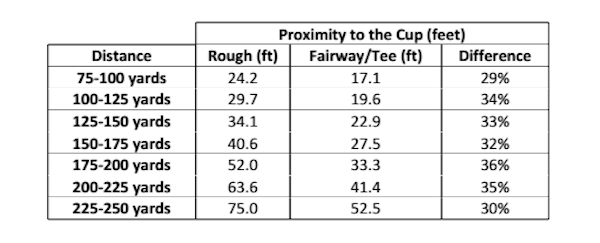
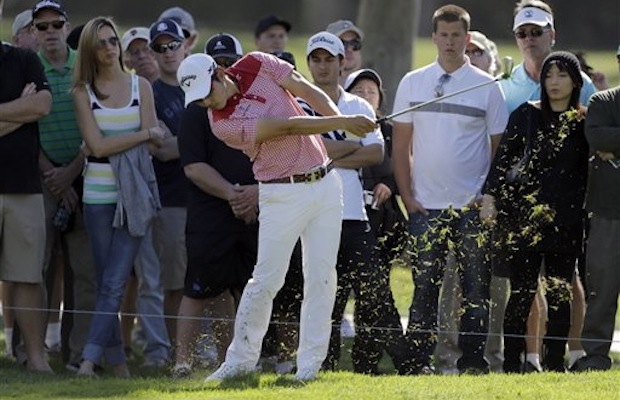











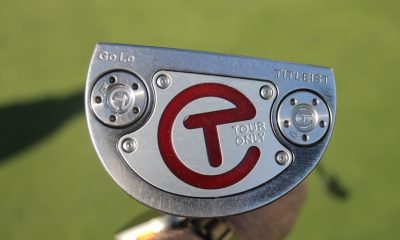

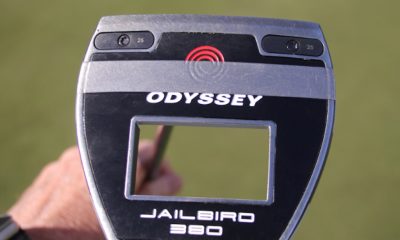

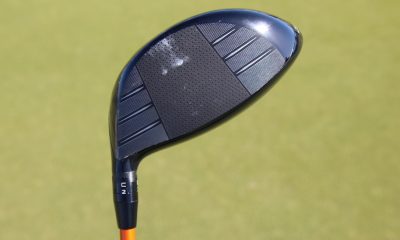



Kevin
Jul 15, 2014 at 2:29 pm
Bottom line, the better your lie is on your second shot on par 5’s, the more aggressively you can play them.
bradford
Jul 15, 2014 at 7:56 am
This just doesn’t apply to beginner or even mid-level (90-105ish) players. Does it factor in the woods on the right they hit with that 3W 40% of the time from the fairway? The bunker that they can’t get out of? The whiff from trying to kill it? I’ll agree with these numbers only on the tour, or low hcp players…for others it’s just simply false.
Sky
Jul 14, 2014 at 10:36 pm
How was Phil one of the most likely to hit driver off the tee if he didn’t carry a driver for most of 2013? Did they count the phrankenwood as a driver?
Brian
Jul 14, 2014 at 9:50 pm
I think the huge thing to consider when going after it as an amateur is the opportunity cost of going for it. If you go by the logic as I have this season (to try and go for it if you can get within 30 yards”) you have to consider what you are giving up. One do the big things is a free 170ish yards. If I lay up on every par 5 I would only have about a wedge in to maybe a 9 iron, but it would be pretty automatic.
If I decide to go for it, the logic of getting within 30 yards weighs extremely heavy on the presumption that you actually hit a good shot or more importantly actually make solid contact (as I have found out the hard way). If you duff it, you are now 200+ yards out hitting 3 aka “jail”. If you hit a shot that slices way right or hooks left, you have the possibly of ending up behind a tree or blocked out.
I think weighing the cost of a duffed wood vs a conservative 150 or 170 yards has to be factored in when deciding to go for it
Richie Hunt
Jul 14, 2014 at 11:54 pm
A major issue with laying up off the tee is that just because you lay-up, there is no guarantee that you will find the fairway. Conversely, just because you hit driver that does not guarantee you will find the rough. And where the real killer is statistically is when players lay-up and miss the fairway. That puts the golfer well behind the 8-ball.
I typically run into the same argument when it comes to getting a short approach closer to the hole. The 13th hole at Bay Hill is that way. The numbers say to get the ball within 110 yards, regardless if the ball finds the fairway or the rough.
Instead, they will come back and say ‘well, all I have to do is lay-up and I will have a 9-iron or PW into the hole.’ But, just because they have a 9-iron or PW doesn’t mean that they will find the green. It’s an easy shot, but getting it inside 110 yards is far easier. And the ods of sticking the <110 yard shot close are much better and his odds of not missing the green is also far better.
It's really common sense…getting the ball closer to the hole generally means that you're expected score will be better. For Tour players, we start to see the difference at around 20 yards (i.e. 130 yard shot will have a noticeably better expected score than a 150 yard shot). But for amateurs we start to see a difference around 10-12 yards (a 140 yard shot vs. a 150 yard shot).
mhendon
Jul 14, 2014 at 6:41 pm
I think its also fair to point out 9 of the top ten guys on the aggressive list would be considered short hitters on the PGA tour.
Rich
Jul 15, 2014 at 9:34 am
You beat me to this point. 9 of those 10 guys have to hit driver because they are short. Phil is the only truely aggressive player on that list. Don’t know where that leaves the article………..
MHendon
Jul 15, 2014 at 11:39 am
It’s like an attorney trying to leave out all the facts to make his case stick.
OhioGolfDude
Jul 15, 2014 at 1:02 pm
I think this is a very fair point. Every player on this list is ranked 70th or below in terms of 2014 driving distance – Mickelson being the only one to crack the Top 100. That being said, because these players are required to hit driver on virtually every hole, I’d like to compare their “go for it” strategy with the fairways hit and GIR stats.
Pingback: How to play long par-4?s and par-5?s effectively | Spacetimeandi.com
webbstar
Jul 14, 2014 at 5:47 pm
thank you for a bit of sanity, it seems that all we hear about is distance is more important than accurate no matter what the situation. The fact is the only time i’m as accurate from the the rough as the fairway is from 125 yards and in but even then i’d rather be in the fairway.
nikkyd
Jul 14, 2014 at 4:38 pm
Does anyone know if there is an average rough height across the board? Shots out of the rough on the pga tour (4″deep grass) sounds demanding, but most municipalities have shorter rough (from what i have seen anyhow) bomb and gouge is a way of life for some of us regardless of rough or not. Its the woods one must be weary of. Sometimes id rather be in the rough because my homecourse fairways and aprons are like concrete!
Jeff Trigger
Jul 14, 2014 at 7:01 pm
Yours too? My course is either drive to the hardpan or hit the 3 inch Bermuda rough.
Dan P
Jul 14, 2014 at 2:06 pm
Another great article from Richie. Keep them coming!
Jedidiah
Jul 14, 2014 at 1:11 pm
Mmm you’ve own me over richie